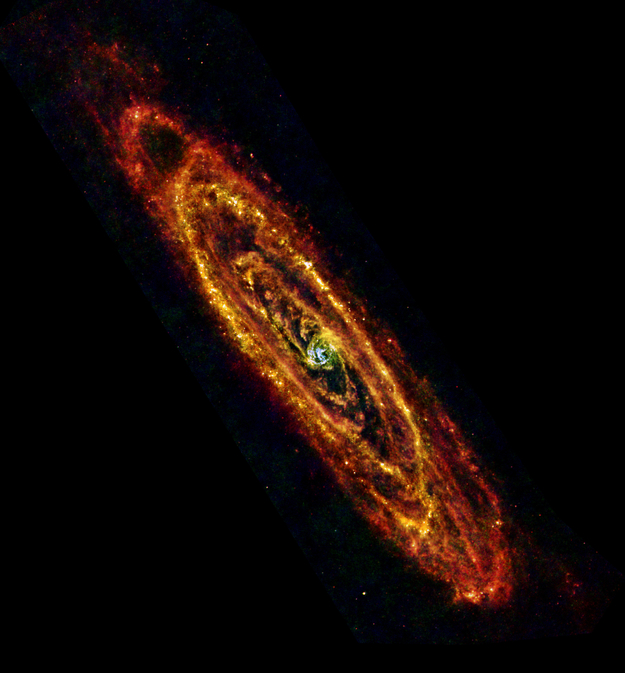Cool Andromeda

Date: 27 January 2013
Satellite: Herschel
Depicts: Andromeda (M31)
Copyright: ESA/Herschel/PACS & SPIRE Consortium, O. Krause, HSC, H. Linz
ESA Herschel space observatory image of the Andromeda galaxy using both PACS and SPIRE instruments to observe at infrared wavelengths of 70 μm (blue), 100 μm (green) and 160 μm and 250 μm combined (red). The image spans approximately 1 × 3 degrees and reveals cool lanes of forming stars in the finest detail yet.
Andromeda, also known as M31, is the nearest major galaxy to our own Milky Way at a distance of 2.5 million light-years, making it an ideal natural laboratory to study star formation and galaxy evolution.
Sensitive to the far-infrared light from cool dust mixed in with gas, Herschel seeks out clouds of gas where stars are born. The new image reveals some of the very coldest dust in the galaxy – only a few tens of degrees above absolute zero – coloured red in this image.
By comparison, warmer regions such as the densely populated central bulge, home to older stars, take on a blue appearance.
Intricate structure is present throughout the 200 000 light-year-wide galaxy with star-formation zones organised in spiral arms and at least five concentric rings, interspersed with dark gaps where star formation is absent.
Host to several hundred billion stars, this new image of Andromeda clearly shows that many more stars will soon spark into existence.
